
When you are training your dog, it is important to send clear, consistent messages. These messages are often called dog training hand commands, cues, or signals.
One of the most effective ways of training your dog is using voice commands, along with visual cues or hand signals.
Introducing hand signals works best at the beginning of your dog training process. However, these hand signals can become a vital part of communicating with your pet as they age.
In most cases, dogs lose some of their hearing in their later years. Deaf dogs benefit from hand signals by ensuring clear communication.
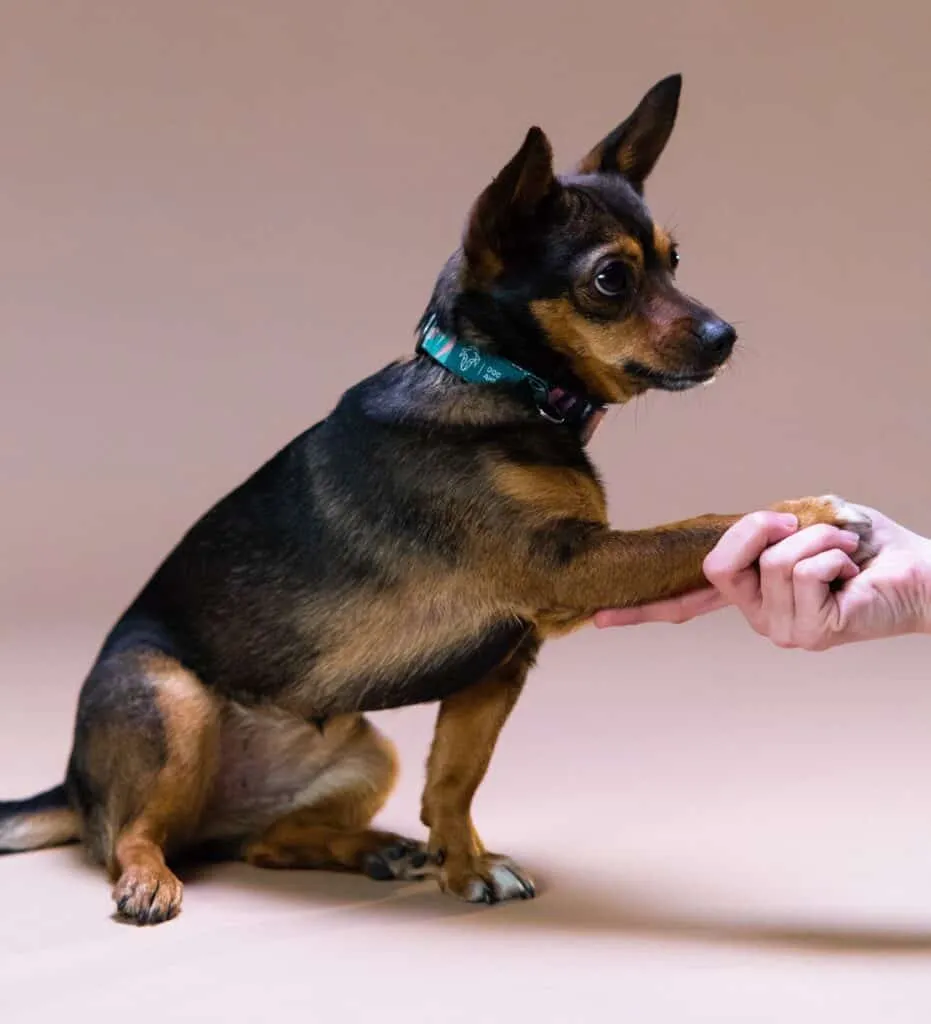
How to Use Dog Hand Signals
The use of hand signals is one of the effective methods of teaching your dog desirable behaviors. Training your dog with hand signals allows you another medium of communication with your pup, strengthening the bond between you two.
With correct training and consistency in practicing training sessions, dogs can learn several common basic dog commands by a mere hand signal. With just a finger or a move of your hand, dogs would obey and exhibit your desired behavior.
Hand signals should always be used with the same verbal commands. When you first introduce hand signals as part of your training process, you also want to reward your pup’s desired behavior with training treats and praises.
This part of the positive reinforcement process ensures that your pup will want to follow your cue each time. As your dog continues to show consistent positive responses to your verbal command paired with the hand signal, you can begin to use fewer treats as a reward.
Your dog should practice responding to your hand signals daily. Consistent practice will help your pup pick things up quickly.
There are no right or wrong hand signals for training your pet. However, once you choose the commands you want to be associated with hand signals, be sure to remain consistent.
Seven Basic Dog Commands and Dog Hand Signals
Several common hand signals can help get you started. Below are the seven basic dog commands you can train your dog using hand signals.
As with all early dog training methods, start teaching hand signals in a distraction-free environment, and you have your dog’s attention fully. W
1. Eyes on Me
This command will be very important if you eventually hope to use hand signals without having to say the verbal cue. Use “Eyes on Me” to show your dog you want their total and complete attention. When first using this command, reward your pup with a treat and verbal praise every time they look directly toward you.
How To Do This
Be sure you have your dog’s focus on you before you teach your dog this visual sign. Bring your pointer finger directly toward your eye. At the same time, say “Eyes on Me” or “Watch Me.” When your pup gives you their undivided attention, reward them. This command will help your dog to learn the desired behavior of waiting for the next command. They would look at you on what they should do next.

Bring your pointer finger directly toward your eye while saying “Eyes on Me” or “Watch Me.”
2. Sit
It is one basic command every dog should learn. Getting your dog to sit is more than just a party trick. Sitting can help keep your pup controlled when they are in busy areas. It also helps remind them to focus on you for the next command.
How To Do This
To teach sit, open the palm of your hand and bring it toward your chest. This small upward motion should be done while you give the command to “sit.”
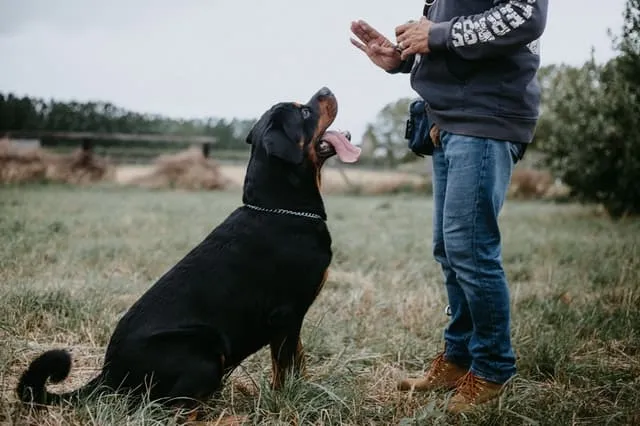
Open the palm of your hand and bring it toward your chest while giving the command “Sit.”
3. Down
Another rather basic command is teaching your dog to lie down. It will help them remain calm or settled when necessary. This will be an essential command to teach your dog, especially if you have young children.
How To Do This
The best visual signal to pair with the “down” command uses only your index finger. Bring a pointed index finger from your shoulder or chest and move it to point directly down on the floor. Be sure to say the command “down” as your finger points toward the floor.

Bring a pointed index finger from your shoulder or chest and move it to point directly down at the floor, saying the command “down” as your finger points toward the floor.
4. Stay
This command can be difficult for many dogs to learn. Your pup must be already mastering looking at you before teaching stay. Teaching your dog to stay helps keep your pet safe when you are out in public. It can also be helpful in curbing your pup’s excitement when guests come to your home.
How To Do This
To teach the “stay” command, pair the verbal cue with a non-verbal hand signal that resembles a stop motion. Use one hand to put a flat palm toward your dog while saying “stay.”
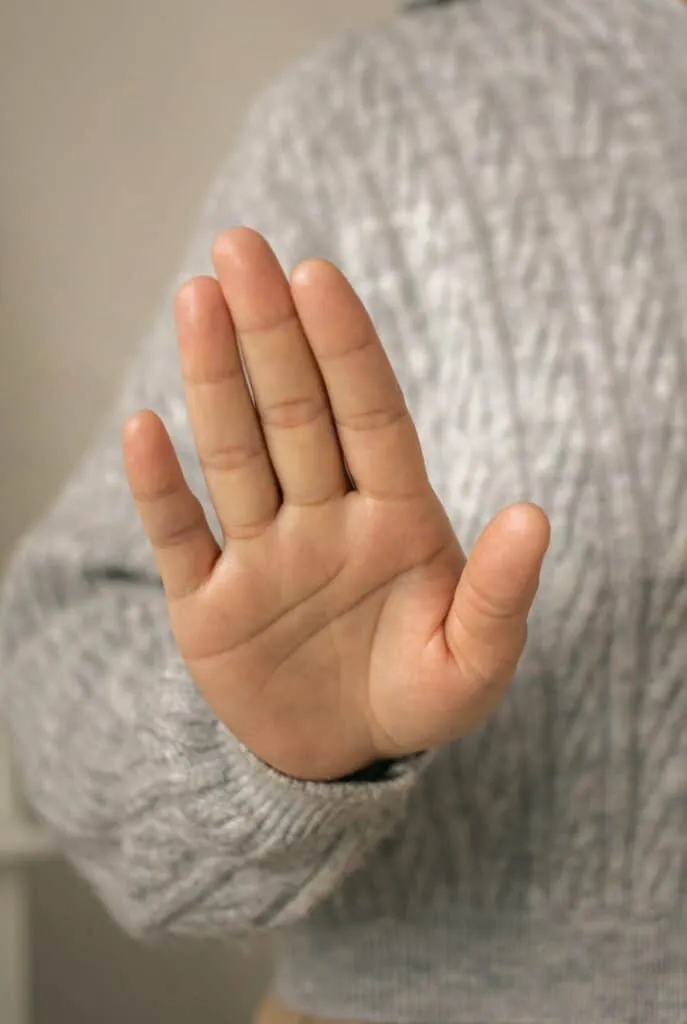
The hand signal for “stay” uses your palm facing forward toward your dog and moving it slightly in a downward motion.
5. Come
The opposite command of “stay” is teaching your dog to “come.” This command is great to teach your pup, especially if you take them to areas off a leash. Come can also be helpful if you want your dog to move to particular areas on your command.
How To Do This
The visual cue and hand signal to use for “come” is to place one hand down by your side. When you use the auditory command to “come,” bring this hand in a diagonal direction to the opposite shoulder. You may also choose to use the hand signal of two wide-open arms, making it look like you are receiving a giant hug.
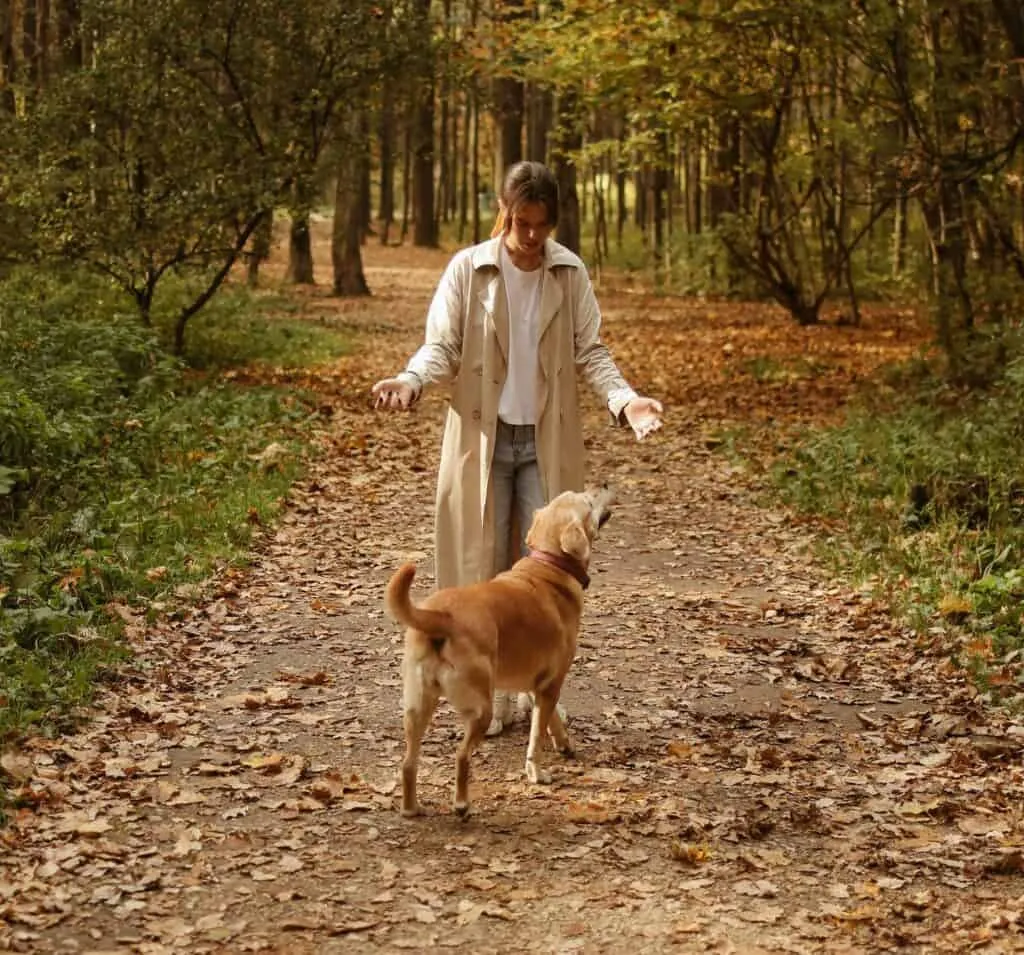
Have your hands wide open just like you are anticipating receiving a hug as a hand signal to direct your dog to “Come.”.
6. Heel
Having your dog heel means they will walk on or off a leash beside you rather than pull in front. This can help make your walking time much easier. In addition, it keeps your dog safe when they are walking in public areas.
How To Do This
While you give the voice command “heel,” put your index finger out right next to your hip or thigh. You may choose to make a hip tap with the hand signal. If your dog is not able to see this motion, use your index finger and make a small circular motion next to your leg while giving the command.
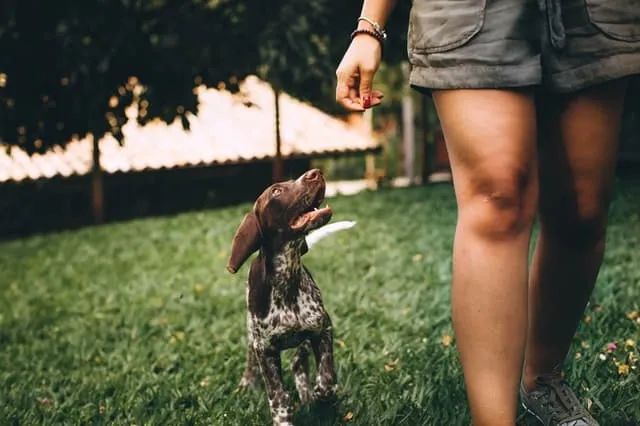
Give the verbal command “heel” at the same time putting your index finger out right next to your hip or thigh.
7. Drop It
Getting your dog to learn to “drop it” will teach them to drop an unwanted or unsafe item from their mouth. This can be especially helpful if you are training a young puppy who will explore by putting many objects into their mouth.
How To Do This
To signal your dog to “drop it,” place a fist near your dog’s nose and mouth. While you give the verbal command, open your hand to a flat palm in front of their mouth. This will signal your pup to drop the object into your hand.
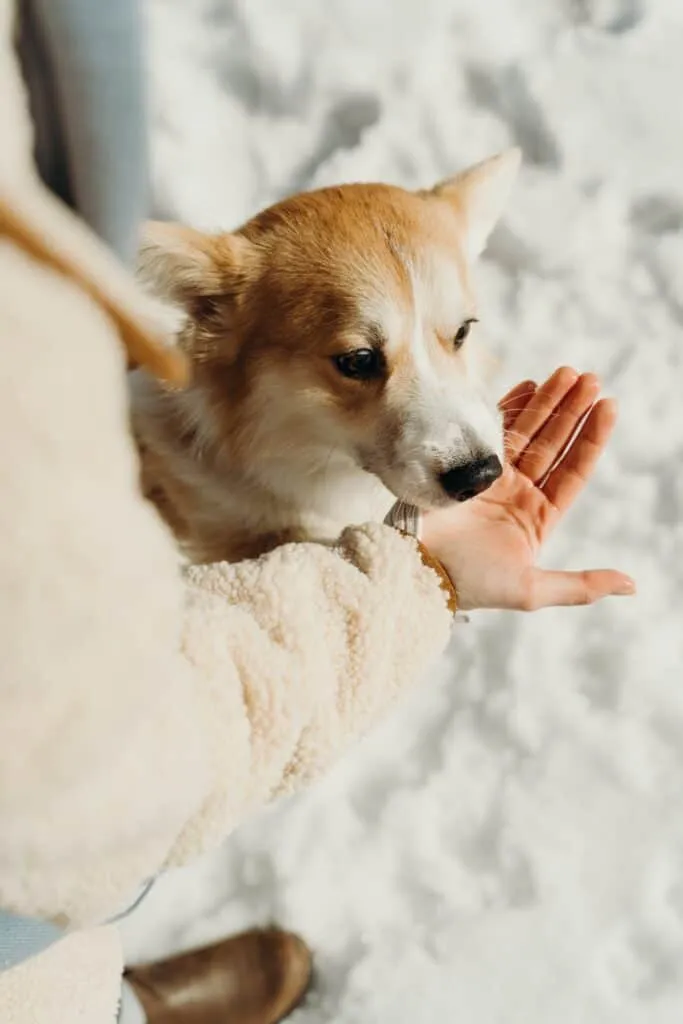
Place a fist near your dog’s mouth while giving the verbal command “Drop It,” Open your hand to a flat palm in front of your dog’s mouth.
Final Thoughts
You may have other dog training commands you want to teach your furry friend. You may want them to go into their crate on command, go to their bed or ring a bell to signal a potty break.
Any command you wish to teach your pet will work well with a verbal cue paired with a hand signal. Be sure the signal you choose is simple and clear enough for your dog to see.
As with most areas of training, be sure to keep your dog’s training to teach hand signals consistent to help your dog succeed. Use the same spoken words associated with the visual signals until your dog learns to associate them both.
Using dog training hand signals can be a helpful tool when training your dog. Along with voice commands or verbal cues, hand signals will help your dog more quickly learn what you expect.
Eventually, your dog will respond to your non-verbal cues, and verbal commands will not always be needed. Be sure to enjoy the process of engaging with your pup using hand signals!